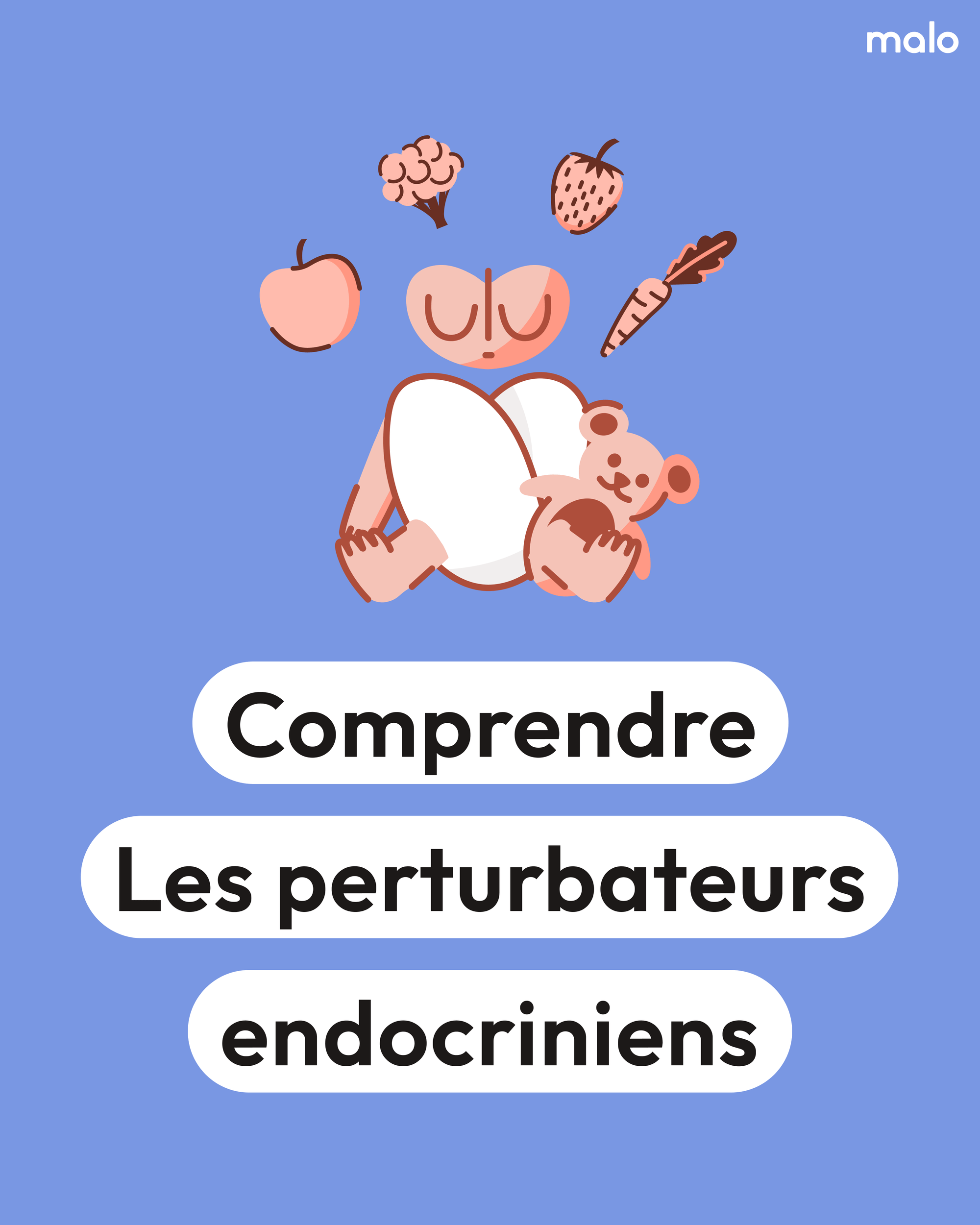Every parent stands at a crossroads: the desire to nurture, to protect, and to create a space where little ones can thrive without invisible threats lurking in the background. Reducing baby exposure to endocrine disruptors nudges right to the center of that concern, weaving a tapestry of questions—Why are we hearing so much about these chemicals? Are they really everywhere? How do they slip into nursery routines, feeding habits, or even the comforting softness of that favorite baby blanket? As parents, you balance love with responsibility, and the maze of modern products complicates those daily choices. This exploration will unravel what endocrine disruptors truly are, why babies face unique risks, and—most importantly—pinpoint practical strategies that make reducing baby exposure to endocrine disruptors both actionable and realistic in a busy family life.
What are endocrine disruptors? Science behind the worry
Take a deep breath and imagine: within baby bottles, plush toys, or the gentle lather of a shampoo, tiny molecules might quietly interfere with the purest ambitions for health and safety. Endocrine-disrupting chemicals (EDCs)—think bisphenol A (BPA), phthalates, parabens, alkylphenols—possess the uncanny ability to mimic or block the body’s natural hormones. At the heart of the issue is hormonal disruption: these substances can confuse the delicate orchestration that guides a baby’s brain growth, thyroid function, and immune development. The World Health Organization draws a clear line: an endocrine disruptor is a substance that, even in minuscule doses, can alter the normal functioning of the endocrine system and trigger adverse effects.
You might wonder: Where do these ubiquitous chemicals originate? Plastics, cosmetics, pesticides, cleaning products, even the water from the tap—these are all potential sources. Exposure happens through ingestion, inhalation, or simple skin contact. Research now points to over 800 known or suspected EDCs, and the scientific community continues to identify more.
Why babies are extra vulnerable to EDCs
Imagine, for a moment, a developing organism so exquisite in its coordination, so reliant on precise chemical signals, that even the slightest interference might tip the scales. Babies—especially in utero and throughout the first 1,000 days—inhabit such a state of rapid growth and cellular transformation. Their immature detoxification systems, combined with behaviors like constant mouthing and crawling, increase their exposure and susceptibility.
What are the possible consequences of reducing baby exposure to endocrine disruptors? Early developmental exposure has been linked to:
- Delayed or abnormal growth, risking cognitive, metabolic, and behavioral difficulties.
- Disrupted hormone signals, potentially leading to early puberty, thyroid issues, or future fertility struggles.
- Weakened immunity, creating a pathway for more frequent infections.
- Increased vulnerability to certain cancers in later life, as highlighted by longitudinal studies.
A single alarming fact: almost all pregnant women carry detectable levels of phthalates or bisphenols; that transfer to the fetus can begin long before birth, further highlighting the importance of strategies for reducing baby exposure to endocrine disruptors.
Most common sources: a parent’s checklist
Everyday objects, unseen risks
Baby bottles, sippy cups, and food containers once commonly contained BPA, with many still harboring its close chemical cousins (BPS, BPB). Old plastic or flexible containers raise the red flag, especially when scratched or heated. Toys—especially those with a sweet vanilla-like scent, often a sign of phthalates—offer soothing comfort yet may carry hidden risks. Textiles, including pajamas or bedding, are sometimes finished with flame retardants or chemical dyes.
Food, water, and the environment
Turn your gaze to the kitchen: formula tins, canned baby foods, or even fresh produce might carry residues of pesticides and EDCs. Water, while essential, can harbor PFAS and other persistent pollutants—filtering becomes more than a matter of taste. The air itself carries a burden of volatile organic compounds (VOCs), often released from air fresheners, scented candles, or cleaning sprays.
Parental exposures: unintentional transfers
The passage of EDCs doesn’t stop at birth. Handling thermal receipts, using certain cosmetics, or living near agricultural areas—these lifestyle details matter. Breastfeeding and prenatal exposure can both pass along low doses during those pivotal growth windows.
Spotting and avoiding endocrine disruptors in baby products
Red flags: what to look out for
Baffled by the fine print on a shampoo bottle or a cleaning spray? Here are the names to scan for and avoid wherever possible:
- BPA and its analogs
- Phthalates
- Parabens
- Alkylphenols
- Triclosan
- Select flame retardants, such as PBDEs
- Dioxins and PCBs (these can persist in dust and older furnishings)
Some terms—“fragrance,” “parfum,” “flavor”—can mask the presence of multiple EDCs under a single label, making transparency a rare luxury for parents eyeing safer products.
Reading labels and making safer choices
Practically speaking, favor products that trumpet a “BPA-free” or “phthalate-free” status, but stay alert: substitutions like BPS may share similar risks. Seek out organic certifications for both foods and natural-fiber textiles, while understanding even these marks are only part of the equation. The OEKO-TEX and GOTS labels for textiles, or databases such as Environmental Working Group’s Skin Deep, offer a layer of reassurance.
Alternatives: turning knowledge into action
Glass, stainless steel, and food-grade silicone emerge as champions for feeding and storage. The tactile allure of untreated wood or organic-fiber toys rivals their plastic counterparts, minus the chemical burden. For clothing and bedding, untreated organic cotton or wool serves as a gentle foundation.
Practical strategies for reducing exposure at home
Safer product choices
Should you clear out the kitchen cabinets? Not necessarily—but replacing plastics (especially older, scratched, or flexible items) with glass or stainless steel is an excellent starting point for reducing baby exposure to endocrine disruptors. Resist the urge to microwave or heat anything in plastic. Silicone or untreated wood becomes the star material in the toy box. Rethink the nursery by prioritizing textiles certified organic or free from chemical dyes and retardants.
Smart food and water habits
Preparing fresh or organic baby food, when feasible, sidesteps many processed sources of EDCs. Wash fruits and vegetables with particular care. For families in areas with questionable tap water, a granular activated carbon filter can lower PFAS and pesticide residues. Never heat formula or purees in plastic containers.
Managing indoor air and cleaning safely
Regular vacuuming with a HEPA filter, along with damp-dusting, reduces household dust that might harbor flame retardants and heavy metals. Choose non-toxic, fragrance-free cleaning products and open windows often for fresh air. Air purifiers can further help lower VOCs and other irritants for families in urban or industrial areas.
Baby care routines for daily peace of mind
Wash new textiles before first use to remove lingering manufacturing chemicals. Opt for baby wipes and creams with minimal ingredients—fragrance and paraben-free, if possible. Cloth wipes or those carrying a certification of chemical safety add yet another layer of reassurance.
Protecting babies before birth and throughout feeding
Maternal and prenatal precautions
For expectant and breastfeeding mothers, reducing baby exposure to endocrine disruptors means thoughtful, everyday shifts—glass water bottles, avoiding canned goods, minimal personal care product ingredients, steering clear of thermal receipts, and selecting maternity-wear made of natural fibers. These adjustments, supported by growing medical evidence, lower both short- and long-term transfer of EDCs.
Feeding: choosing the cleanest path
Whether by breast or bottle, risk reduction remains key. For formula, favor glass or certified plastic bottles labeled free of BPA and phthalates—and always avoid heating plastic. Breastfeeding mothers can continue the same avoidance strategies, since EDCs may persist in breast milk but are often outweighed by the overwhelming benefits of breastfeeding when feasible.
What do regulations actually offer? A look at the landscape
Global standards and changing industry practices
Many countries now restrict BPA, select phthalates, and flame retardants in baby products, but policies shift—sometimes too slowly to keep up with science. Certifications such as OEKO-TEX, EN 71 (toys), and GOTS (textiles) elevate peace of mind, though labeling transparency still varies. Substitutes for banned chemicals—BPS or other bisphenol derivatives—often require just as much scrutiny. Legislative gaps remain; vigilance at home and consumer advocacy fill the space between evolving science and current regulatory timelines.
A parent’s role in advocacy and choice
Informing your choices and supporting improved transparency feed directly into broader industry shifts. While not all families can afford exclusively organic or high-end labels, collective demand encourages tighter standards and more options for all.
Keeping up with science, supporting each other
Rapid research advances and ongoing monitoring
Medical literature leaves little doubt: even low-level, ongoing contact with EDCs during infancy or pregnancy can leave lasting marks, especially when exposures are mixed. Some families use home biomonitoring kits to check for common EDCs in dust or on surfaces, but even simple changes—glass over plastic, fresh over canned, certified over generic—show measurable reductions.
Community, support, and professional resources
The task may seem daunting, yet pediatricians, environmental health experts, and engaged communities provide a web of support. Practical tips—shared through community groups or trustworthy digital resources—echo the same message: incremental, mindful shifts matter for reducing baby exposure to endocrine disruptors. Families can further explore customized health recommendations and evidence-based guidance through resources including the Heloa app.
Key Takeaways
- Reducing baby exposure to endocrine disruptors is achievable through daily, practical steps rooted in medical and scientific research.
- Replacing plastics with glass or stainless steel and choosing organic baby food, textiles, and fragrance-free care products significantly lowers household risk.
- Washing produce, using water filters, and focusing on ventilation support a healthier environment.
- Regular label checks, seeking certifications, and avoiding broad terms like “fragrance” provide stronger control over hidden chemicals.
- Empowerment grows with every informed choice—small changes now protect not only babies but entire families for the long term.
- Ongoing research, professional guidance, and supportive communities make this journey both manageable and meaningful.
- For personalized advice and free child health questionnaires, download the Heloa app—an ally on the road to safer, healthier routines.
Questions Parents Ask
What are easy ways to reduce my baby’s exposure to endocrine disruptors on a daily basis?
Small changes can make a meaningful difference in your family’s daily life. You might try replacing plastic food containers and bottles with glass or stainless steel. Washing fruits and vegetables thoroughly helps limit pesticides, and whenever possible, choosing fresh or organic foods can lower exposure to certain chemicals. Keeping your home well-aired and regularly dusted helps reduce the buildup of potentially harmful substances in dust. Simple steps, like choosing fragrance-free personal care products or opting for wooden or silicone toys, are practical and reassuring options for parents looking to take action—without adding extra stress.
Are there specific types of plastics I should avoid for my baby’s food and drink?
It’s perfectly normal to feel unsure when choosing baby products. Plastics labeled with recycling codes 3, 6, or 7 are more likely to contain chemicals such as phthalates or bisphenol A (BPA), which studies suggest can act as endocrine disruptors. Favor items marked as BPA-free or consider switching to glass or stainless steel for storing, heating, or serving food and drinks. If you do use plastic, try not to heat food or liquids in them, as warmth increases the release of unwanted chemicals.
How do I select safer personal care products for my baby?
When picking out shampoos, lotions, or wipes for your baby, opting for products with a simple ingredient list is a gentle approach. Look for labels that mention “fragrance-free” and free from parabens or phthalates. Products with natural or organic certifications can offer added peace of mind. If you have any doubts, you can always consult your pediatrician or a pharmacist for recommendations tailored to your family’s needs, without any pressure or judgment on your choices.

Further reading:









